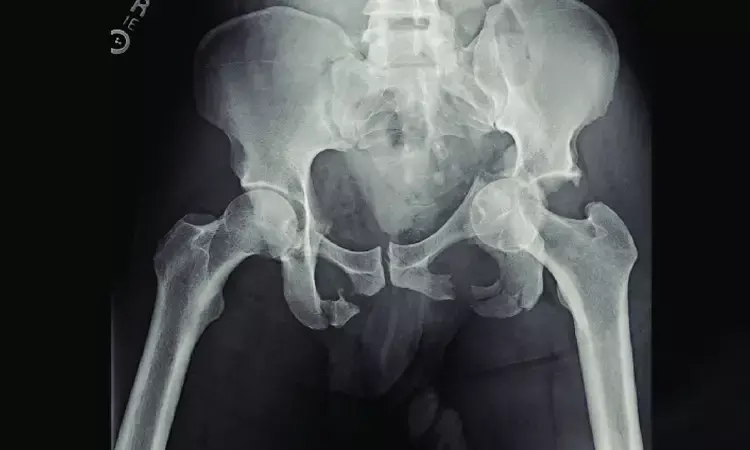- Home
- Medical news & Guidelines
- Anesthesiology
- Cardiology and CTVS
- Critical Care
- Dentistry
- Dermatology
- Diabetes and Endocrinology
- ENT
- Gastroenterology
- Medicine
- Nephrology
- Neurology
- Obstretics-Gynaecology
- Oncology
- Ophthalmology
- Orthopaedics
- Pediatrics-Neonatology
- Psychiatry
- Pulmonology
- Radiology
- Surgery
- Urology
- Laboratory Medicine
- Diet
- Nursing
- Paramedical
- Physiotherapy
- Health news
- Fact Check
- Bone Health Fact Check
- Brain Health Fact Check
- Cancer Related Fact Check
- Child Care Fact Check
- Dental and oral health fact check
- Diabetes and metabolic health fact check
- Diet and Nutrition Fact Check
- Eye and ENT Care Fact Check
- Fitness fact check
- Gut health fact check
- Heart health fact check
- Kidney health fact check
- Medical education fact check
- Men's health fact check
- Respiratory fact check
- Skin and hair care fact check
- Vaccine and Immunization fact check
- Women's health fact check
- AYUSH
- State News
- Andaman and Nicobar Islands
- Andhra Pradesh
- Arunachal Pradesh
- Assam
- Bihar
- Chandigarh
- Chattisgarh
- Dadra and Nagar Haveli
- Daman and Diu
- Delhi
- Goa
- Gujarat
- Haryana
- Himachal Pradesh
- Jammu & Kashmir
- Jharkhand
- Karnataka
- Kerala
- Ladakh
- Lakshadweep
- Madhya Pradesh
- Maharashtra
- Manipur
- Meghalaya
- Mizoram
- Nagaland
- Odisha
- Puducherry
- Punjab
- Rajasthan
- Sikkim
- Tamil Nadu
- Telangana
- Tripura
- Uttar Pradesh
- Uttrakhand
- West Bengal
- Medical Education
- Industry
Pelvic bone loss may contribute to pelvic stress fracture after hip replacement surgery

Total hip replacement may affect the development of a type of pelvic stress fracture, sacral insufficiency fracture (SIF), suggests a study in The Journal of Bone & Joint Surgery. The journal is published in the Lippincott portfolio in partnership with Wolters Kluwer.
In particular, SIF appears more likely to occur on the side opposite from previous total hip arthroplasty (THA), according to the new research by Dr. Isabel Graul and colleagues of University of Jena, Eisenberg, Germany. The study also provides evidence that loss of bone density leading to SIF begins within the first postoperative year following THA.
Study suggests 'spatially different bone remodeling' across the sacrum following THA
Sacral insufficiency fracture occurs as a result of decreased bone mineral density in the sacrum. These fractures most commonly occur in older women, causing low back pain that worsens with activity. SIF is becoming increasingly common as the population ages and live longer, leading to more patients with osteoporosis.
Although several risk factors for SIF have been identified, the role of THA is unclear. Dr. Graul and colleagues designed a two-part study to assess the influence of THA on the development and localization of SIF. In a review of 171 patients diagnosed with SIF, the researchers identified 50 patients with previous THA in one or both hips. The average age was 79 years, and 40 of the patients were women. On average, SIF developed about eight years after THA.
Among the 31 SIF patients who had undergone THA in just one hip, the SIF was located in the opposite side twice as often as in the operative side (42 percent compared with 19 percent, respectively). The remaining 39 percent of patients developed SIF on both sides of the pelvis.
In the second part of the study, the researchers analyzed 39 patients with initially healthy bone mineral density who underwent THA. Changes in bone density were assessed in computed tomography scans performed at 1 year after THA. The results showed a small but significant reduction of bone mineral density in the sacrum, but only on the side opposite from the THA. There was no significant change in bone mineral density in the sacrum on the same side as the THA.
Over time, THA may lead to "spatially different bone remodeling," as a result of changes in load transmission through the pelvis, Dr. Graul and colleagues write. The authors note that a key question remains unresolved: does THA cause decreased bone loss on the opposite side of the sacrum, or does it prevent bone loss on the same side of the sacrum. The researchers conclude, "additional studies focusing on this remodeling process, and assessing different implant designs and longer-term changes, are needed."
https://www.jbjs.org/mreader.php?id=210553&rsuite_id=3115859&native=1&source=The_Journal_of_Bone_and_Joint_Surgery/Publish Ahead of Print//10.2106/JBJS.21.00218/abstract&topics=hp+oe#info?utm_source=press&utm_medium=press&utm_campaign=jbs_pr_112321
Hina Zahid Joined Medical Dialogue in 2017 with a passion to work as a Reporter. She coordinates with various national and international journals and association and covers all the stories related to Medical guidelines, Medical Journals, rare medical surgeries as well as all the updates in the medical field. Email: editorial@medicaldialogues.in. Contact no. 011-43720751
Dr Kamal Kant Kohli-MBBS, DTCD- a chest specialist with more than 30 years of practice and a flair for writing clinical articles, Dr Kamal Kant Kohli joined Medical Dialogues as a Chief Editor of Medical News. Besides writing articles, as an editor, he proofreads and verifies all the medical content published on Medical Dialogues including those coming from journals, studies,medical conferences,guidelines etc. Email: drkohli@medicaldialogues.in. Contact no. 011-43720751


